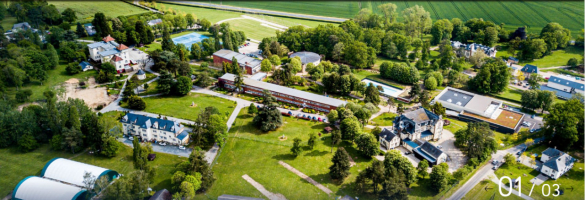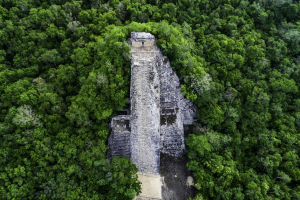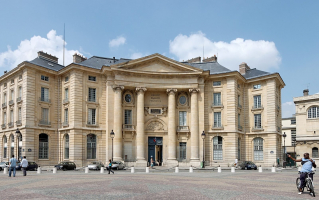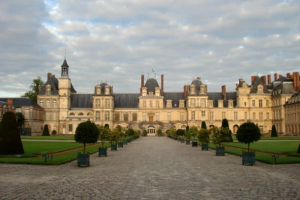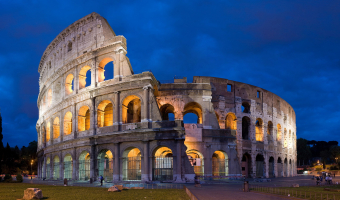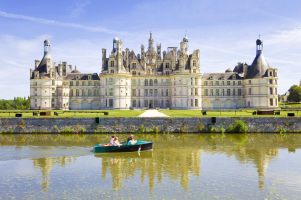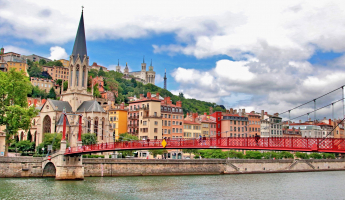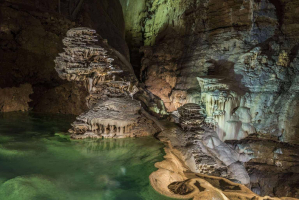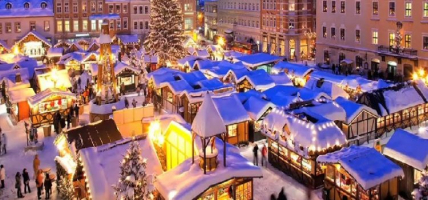Top 10 Best Ancient Amphitheatres in France
France has always been a tourist destination that attracts many tourists from all over the world. This place is not only famous for many beautiful natural ... read more...attractions, and long-standing culture but is also known as the place of ancient and unique architecture. Let's explore with Toplist the best ancient amphitheatres in France!
-
The first position on the list of the best ancient amphitheatres in France is the Arles Amphitheatre. It was constructed in 90 AD and is located in the French town of Arles in the Provence area.
At the height of the Roman empire, Arles was a prosperous metropolis. Over 20,000 honorable Roman citizens could sit in this impressive amphitheater, which the town constructed in the year 90 AD. The building, which was modeled after the famous Coliseum in Rome, features more than 120 arches, a network of galleries and stairways, and two levels of seating. Gladiatorial fights, chariot racing, and theatrical plays were just a few of the entertainment options offered by the amphitheater for more than four centuries.
The oval-shaped Amphitheatre has terraces, 60 arcades on two levels, bleachers, a network of galleries, and a drainage system all around it. The amphitheatre was converted into a stronghold with four towers in the fifth century, when the Western Empire was overthrown. The building encompassed more than 200 homes and served as a true town with a working public square and two chapels placed in the middle of the arena. It remained a residential location until the late 18th century, but thanks to the initiative of author Prosper Merimee, it was transformed into a national historical monument starting in 1825.
Location: Arles, Bouches-du-Rhône, France
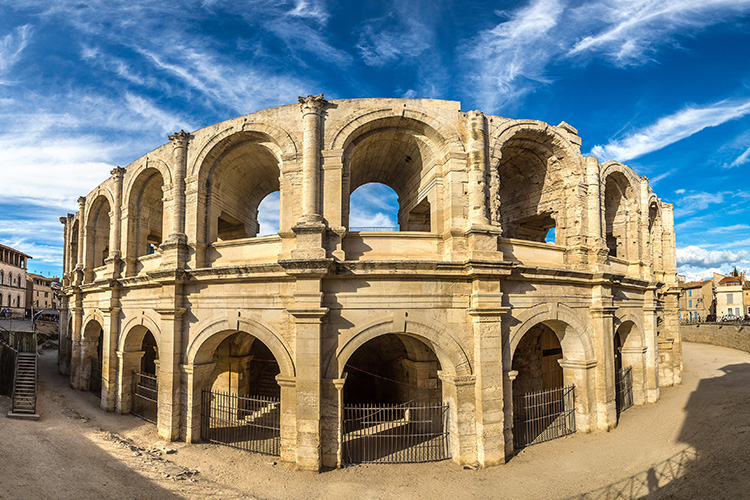
Photo: historyhit.com 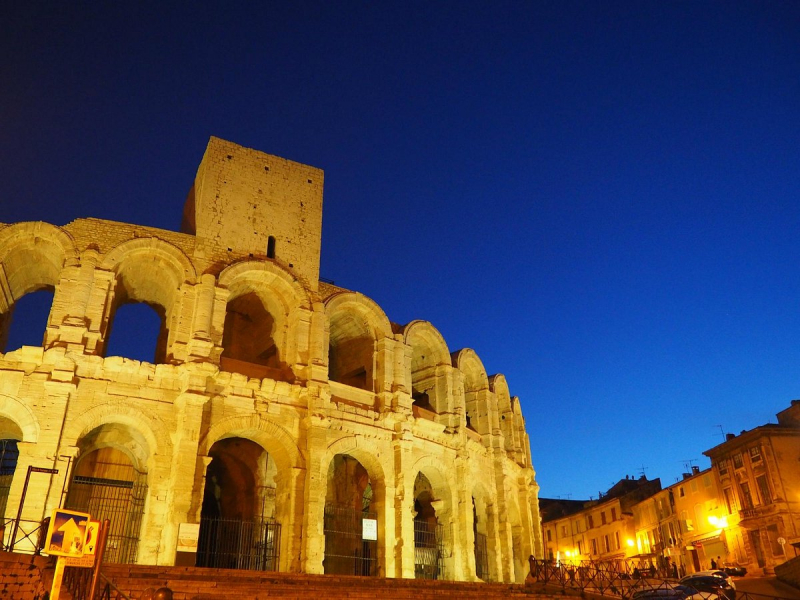
Photo: tripadvisor.com.vn -
One of the best surviving Roman amphitheaters in the world, Nimes Arena (Arenes de Nimes), also known as Nimes Amphitheatre, offers tourists an evocative glimpse into Roman France.
Nimes Arena, a wonder of Roman engineering with a spectacular façade of archways and embellishments, was built in the first century under the reign of Emperor Augustus. Nimes Arena was a huge, oval amphitheater with 34 terraces that were evocative of the Colosseum. The residents of Nimes, then known as Nemausus, would witness the games being played there from the legendary gladiatorial contests to animal hunts including lions, tigers, and even elephants from where they sat according to their social position. The condemned would be thrown to the animals during executions that took place in the Arena.
The Nimes Arena has been completely restored and is now a well-liked tourist destination that offers visitors a look into the dramatic world of the Roman amphitheatre. The website is not only amazing but also quite educational and ideal for fans of ancient history because it includes an interactive audio commentary and in-depth exhibitions. In addition to its historical significance, Nimes Arena is still utilized for events today, such as the 'Great Roman Games' and two bullfights that take place twice a year during the Feria de Nimes.
Location: Nîmes, France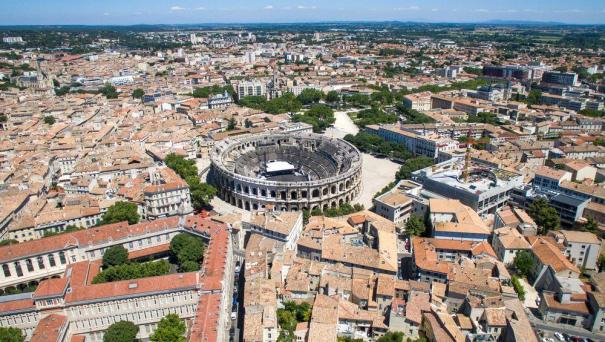
Photo: totallyjewishtravel.com 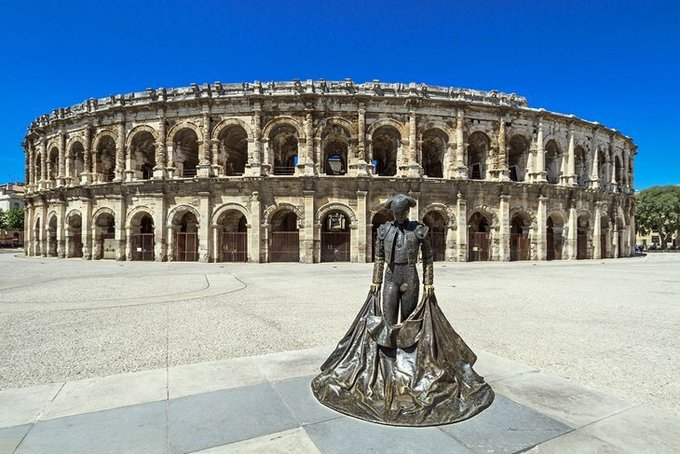
Photo: vnexpress.net -
The 5,000-seat Arènes de Fréjus Roman amphitheater is situated in Fréjus, France. The building was constructed in the first century. Major rock concerts have recently taken place at the arena, featuring performers like Rod Stewart, David Bowie, Queen, Iron Maiden, and Tina Turner. The first list of monuments in France was created in 1840 at the request of the Inspector General of Historical Monuments. Of the thirty mentioned, the Amphitheatre of Frejus was one of them and is one of Gaul's oldest structures. After the Malpasset Dam Collapse Disaster, the Amphitheatre was entirely cleared in 1960. Parts of it had been excavated in 1828.
Visitors should anticipate seeing a very different scene today from what Hugo portrays in this passage because the building has undergone extensive renovation. Because it was designed with performance and spectacle in mind, the Amphitheatre is less of a well-preserved Roman ruin and more of a testament to architecture that successfully balances form and function.
Visitors can view the walls from the first and second floors, which are connected by a stairway. On the bottom floor, there is a historical gallery you may explore, or you can take a breather in the cavea, a specifically created public space where you can see current events. The Amphitheatre's central tribune, which was originally reserved for notable historical figures and high-ranking individuals, is its most unique feature. Arènes de Fréjus is one of the best ancient amphitheatres in France.
Location: 296 Rue Henri Vadon, 83600 Fréjus, France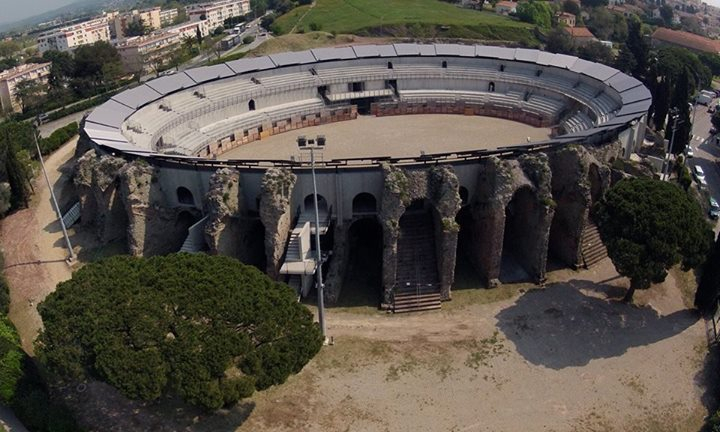
Photo: toreoyarte.com 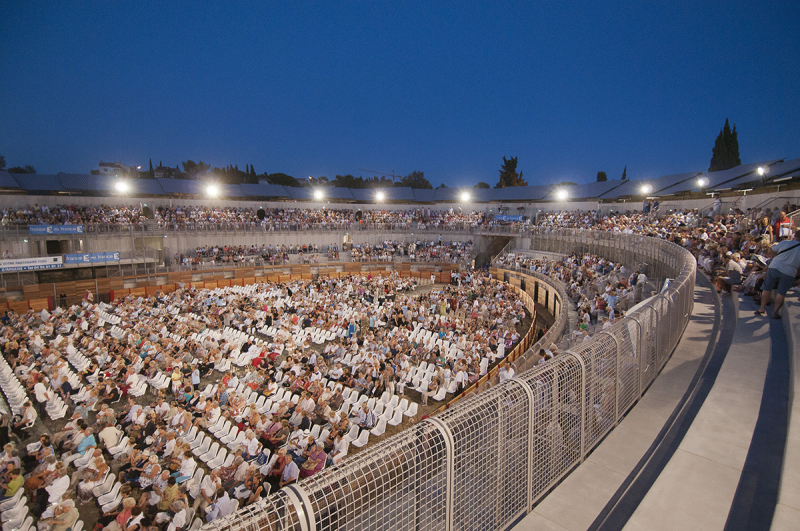
Photo: casabandbstraphael.fr -
The Sanctuary of the Three Gauls, which the 60 Gallic tribes assembled at Lugdunum to commemorate, included the Amphitheatre of the Three Gauls (also known as the Amphithéâtre des Trois Gaules in French). It was designated as a monument historique in 1961.
Formerly known as Lugdunum in Roman times, Lyon. The Amphitheatre of the Three Gauls is believed to have been built in 19 AD and was funded by a long-established Gallic family with Roman citizenship, despite the fact that the city was founded circa 44 BC. The term "Three Gauls" refers to the principal provinces of Gaul at the period, Belgica, Aquitania, and Lugdunensis, the capital of which was Lugdunum.
The theater, which could hold 1,800 people, was a gathering place for representatives of the 60 Gallic tribes and hosted events related to the imperial worship. In the course of the persecution of Christians at the time, it is believed that some Christians were killed in the second century AD at the Amphitheatre of the Three Gauls.
Only a little portion of the Amphitheatre of the Three Gauls is still visible today; the remainder has been virtually consumed by the new highways and structures that surround it. What is still there comprises a portion of its walls, its northern entrance, and some of its foundations, all of which are accessible to the public for independent exploration.
Location: 69001 Lyon, France
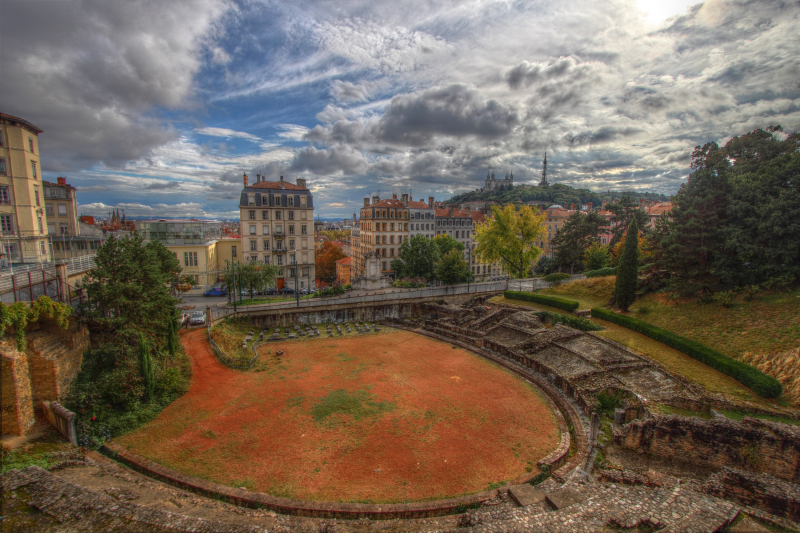
Photo: wikipedia 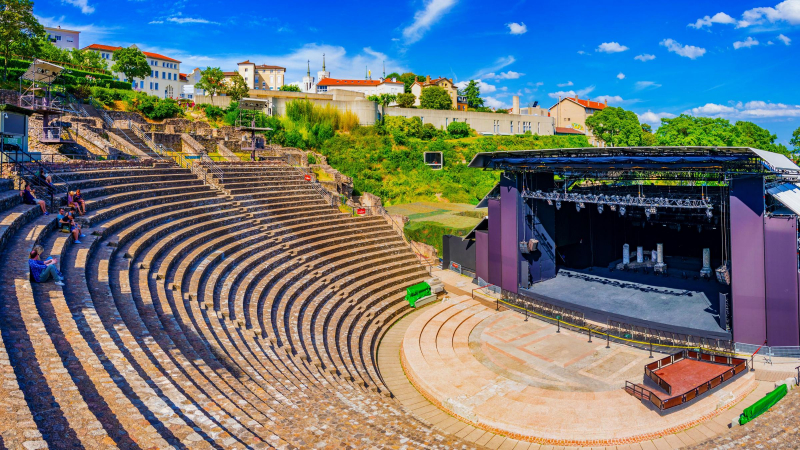
Photo: planetofhotels.com -
One of the most significant and few relics of Lutetia's Gallo-Roman town is Arenes de Lutece, often known as "Lutetia Arena", which is located in Paris. On the site of what is now Paris, a town called Lutetia or "Lutece" once stood. It was a Roman city after began in pre-Roman Gaul.
Arenes de Lutece was a huge amphitheater that could hold between 10,000 and 15,000 spectators when it was first constructed in the first to second century AD. Arenes de Lutece was sacked around 280 AD, but there aren't many remnants. The arena is the third-largest Roman coliseum in France and the oldest historical structure ever constructed in Paris.In the past, fans would fill the tier-style seating terraces that rose up along the sloping slopes to see Roman gladiators battle wild animals in the center of the amphitheater. Theater performances and speakers might be hosted on a 135-foot stage at one end. There are various ground-level areas where the Romans kept caged animals; a circus was also held here at one point.
Nowadays, skateboarding competitions and picnics are more likely to take place in Arenes de Lutece than gladiator fights. Now, a small park with grassy slopes, blooming flora, and numerous trees surrounds the coliseum.
Location: Paris, Ile-de-France, France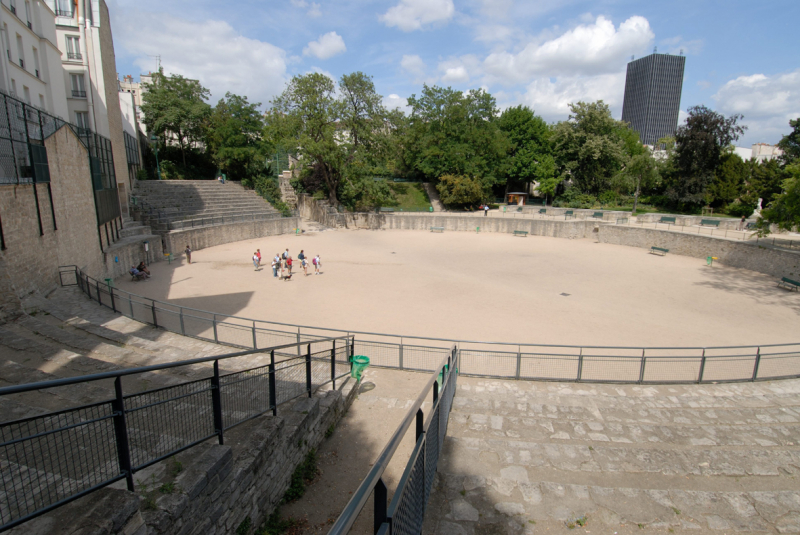
Photo: timeout.com 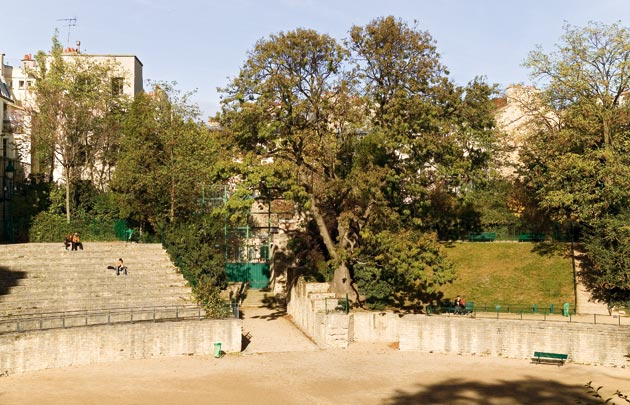
Photo: en.parisinfo.com -
The next position on the list of the best ancient amphitheatres in France is Bordeaux Amphitheatre. All that is left of Burdigala, a once-vibrant Roman city, is the Bordeaux Amphitheatre, also known as Palais Gallien, which is tucked away among gorgeous French boulevards and cobbled streets. The old amphitheatre in Bordeaux, which serves as a striking reminder of the Roman presence that once ruled the region, is currently being protected by the state after being placed under official protection in 1911.
The Roman province of Gallia Aquitaina is supposed to have had Burdigala as its capital. Under the rule of Emperor Augustus, Burdigala became a part of Rome. The splendor of the amphitheatre, which formerly housed about 15,000 people, reflects the significance of the city.
The spectacular remnants of the Bordeaux Amphitheatre, located in the center of Bordeaux and devastated by fire during the Germanic assaults of the town, are well worth a visit. What was once a huge Roman amphitheatre has been reduced to just a small section today.
The amphitheatre, which is typically elliptical in shape, was finished at a size of around 70 by 47 meters. Similar to the arenas at Nîmes and Arles, a building at the entry has a 3D reconstruction of the original plan.Location: Bordeaux, New Aquitaine, France
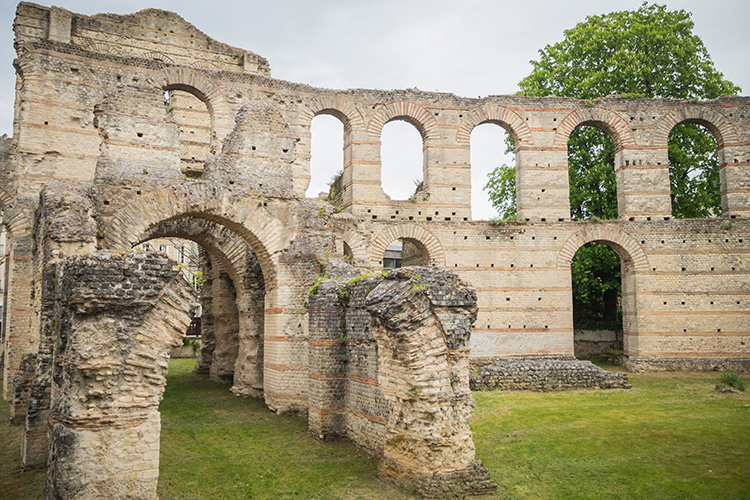
Photo: historyhit.com 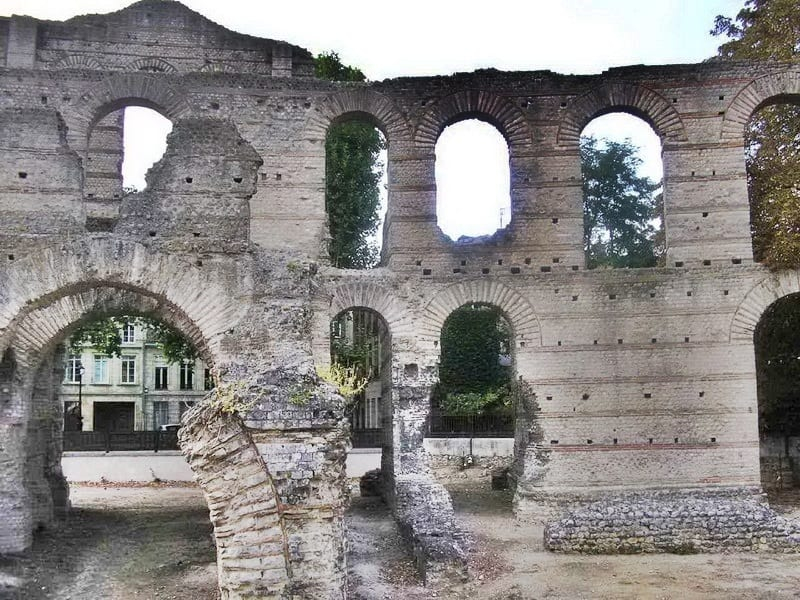
Photo: archaeology-travel.com -
Roman amphitheater ruins can be found in Cahors, a city in southern France. The city's main underground parking structure now has a distinctively archaic feel thanks to the amphitheatre.
The French province of Quercy, which is now Lot, had Cahors as its capital. The decisive conflict between the Gallic alliance and the Roman invasion took place in this area, at Uxellodunum, in 51 BC. The Cadurci Celts were among the last peoples to fight back against Roman conquest, but romanization moved quickly and the area soon joined Rome's Aquitania prima.
By establishing a town in the heart of the region's Gaulish inhabitants, the Cadourques, during the reign of Emperor Augustus, the Roman colonists solidified their victory. The Roman settlement was established on a broad section of the Lot River close to a spring that the Gauls worshiped in honor of the goddess Divona. Cahors acquired the name Divona Cadurcorum as a result.
Travel to Cahors today by automobile to see the ruins of the city's oval amphitheatre, which were discovered during the excavation of the underground parking garage at the Place Gambetta, which is located just west of and partially beneath Boulevard Gambetta in the heart of the city. The statue of notable French lawmaker Leon Gambetta, which was unveiled in April 2009, is located below the first level of the parking lot, where the stone walls may be seen.
Location: Cahors, Occitania, France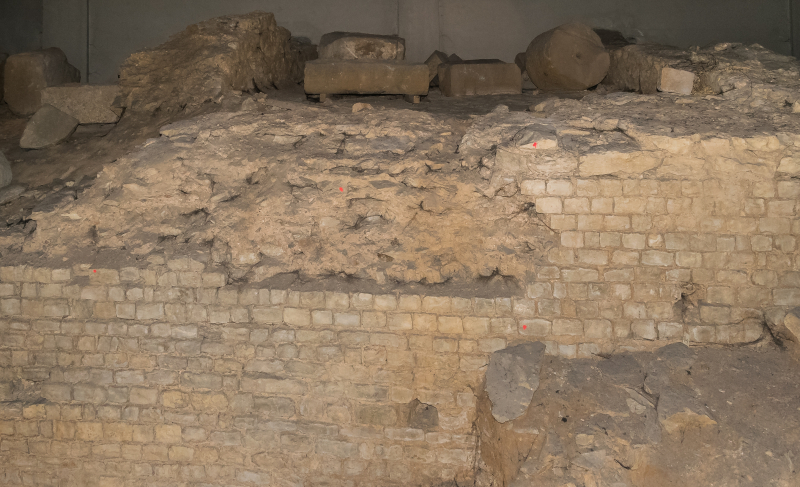
Photo: wikimedia commons 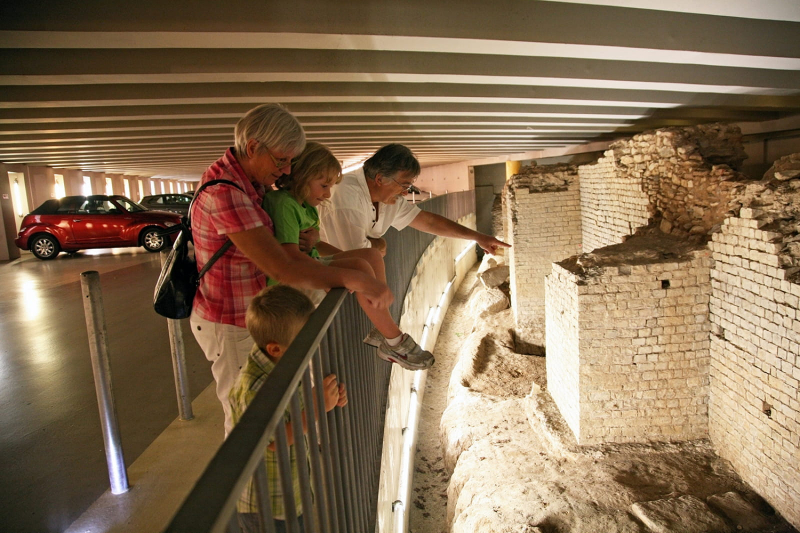
Photo: cahorsvalleedulot.com -
The Tours Amphitheatre is a Roman amphitheater that can be found directly behind the famous Tours Cathedral in the heart of Tours' old city center. When Caesarodunum was the name of the city, it was constructed in the first century.
It was among the top ten largest buildings in the Roman Empire when it was expanded in the second century. Given the population and the city's sluggish growth at the time, it is unclear why the amphitheatre was enlarged. A century or so later, this larger amphitheater underwent a fortification process that included the construction of a rampart-style wall, which was common throughout the fall of the Roman Empire. During the Middle Ages, it progressively fell into disrepair and was covered up by canonical houses as they were constructed. At some point, the vomitoria were converted into cellars.
Today, from the northwest to the southeast, Rue du Général-Meusnier follows the amphitheatre's curvature. At the north-west and north-east corners of the monument's circumference, the rue Racine and the rue de la Bazoche form a tangential straight line. You can freely explore the ruins.
Location: Tours, Centre-Val de Loire, France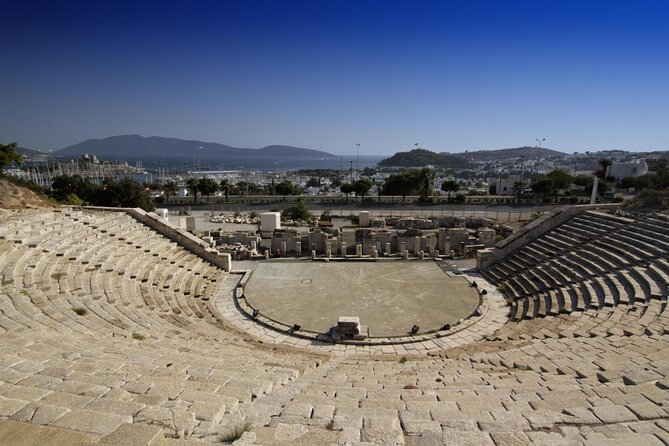
Photo: viator.com 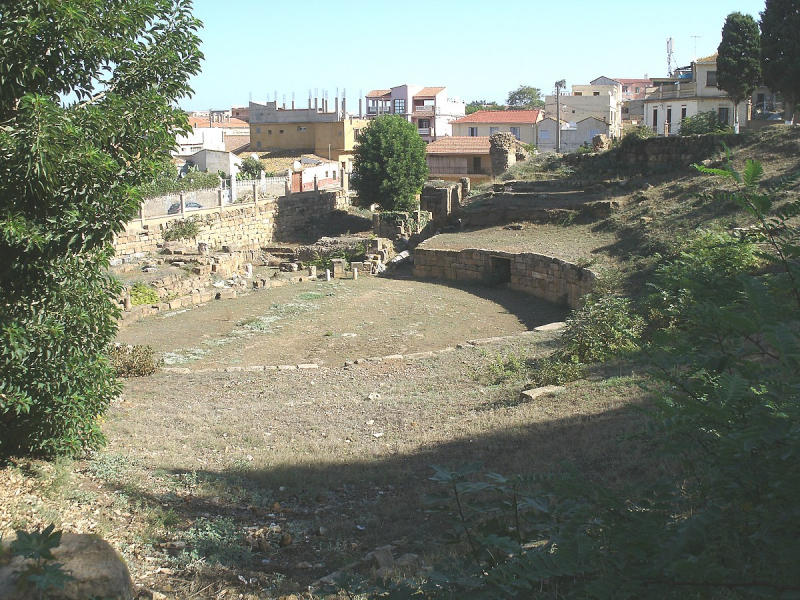
Photo: wikidata.org -
During the time of Emperor Claudius, in 40 AD, the Roman Amphitheatre in Saintes was constructed. Around 20 BC, the prosperous Roman town of Saintes, then known as Mediolanum Santonum, was established in what is now France. Ancient Roman sports would have taken place at the amphitheatre, which could accommodate thousands of spectators. It was created by making use of the relief site and can hold up to 15,000 spectators for occasionally brutal and violent performances. The tiers are located on an embankment in the west and are based on the valley side slopes.
The Roman Amphitheatre at Saintes, together with the Arch of Germanicus, offers tourists a glimpse of the famous ancient Roman city and is unquestionably worthwhile for anyone exploring the area.
Although grass has now taken over a large portion of the seating area, the location is still magnificent. It is still conceivable to visualize the fights that took place here between gladiators and wild beasts, just like at Rome's Colosseum.The Sanavivaria entryway, which resembles the one in the Italian capital and is located at one end of the Saintes amphitheatre, was used to let in gladiators and animals trained for combat. They left by the same doorway if they were fortunate enough to make it through the content. But if they passed away, they were sent through the Libitinensis door (named after Libitina, the goddess of death, corpses and funerals).
Location: Saintes, New Aquitaine, France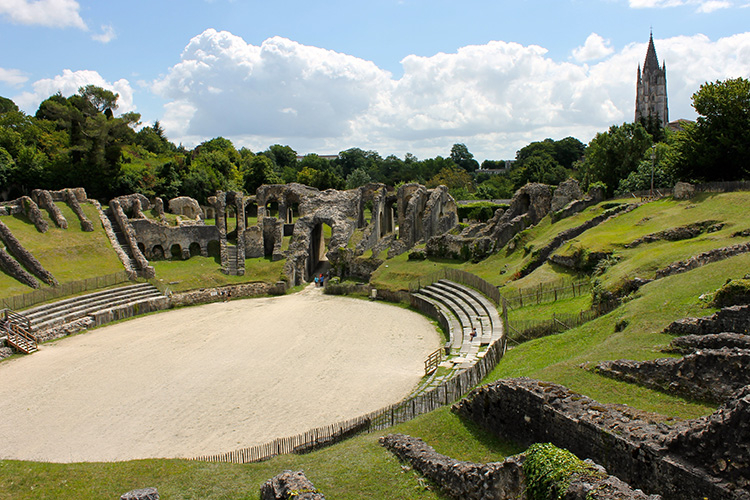
Photo: historyhit.com 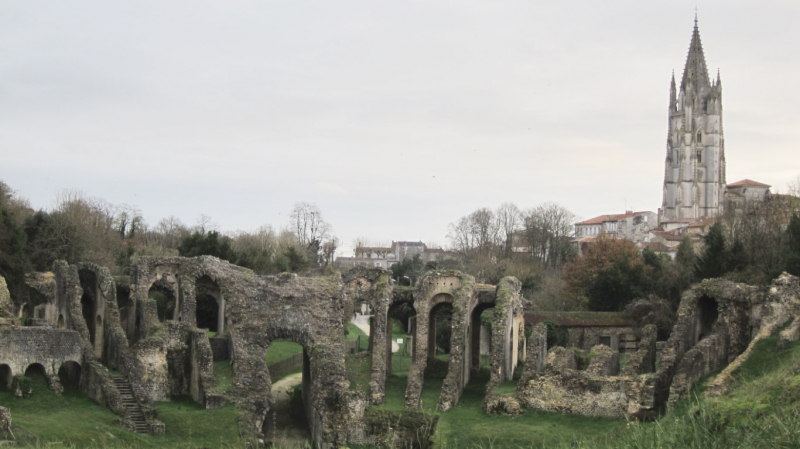
Photo: the-french-atlantic-coast.com -
One of the best ancient amphitheatres in France is the Roman Theatre of Orange. In Orange, Vaucluse, France, there is a Roman theater called the Roman Theatre of Orange. Early in the first century AD, it was constructed. The Chorégies d'Orange summer opera festival is held at the building, which is owned by the city of Orange.
One of the most well-preserved of all Roman theaters, Colonia Julia Firma Secundanorum Arausio (literally, "the Julian colony of Arausio created by the soldiers of the second legion") served the Arausio Roman colony, which was formed in 40 BC. The theater, which played a significant role in the lives of the residents and where they spent a significant portion of their free time, was considered by the Roman authorities as a means of both introducing Roman culture to the colonies and diverting them from all political activities.
The main types of entertainment, much of which lasted all day, included mime, pantomime, poetry readings, and the "attelana," a type of farce similar to the commedia dell'arte. Magnificent stage sets and the utilization of stage equipment became crucial for the common people who enjoyed dazzling effects. Everyone was welcome and there was no cost for the entertainment.
Along with being used as a tourist destination, it has been returned to its original use, primarily for opera. Due to its exceptional preservation and construction, the Roman Theatre was added to the UNESCO World Heritage List in 1981.
Location: Orange, Vaucluse, France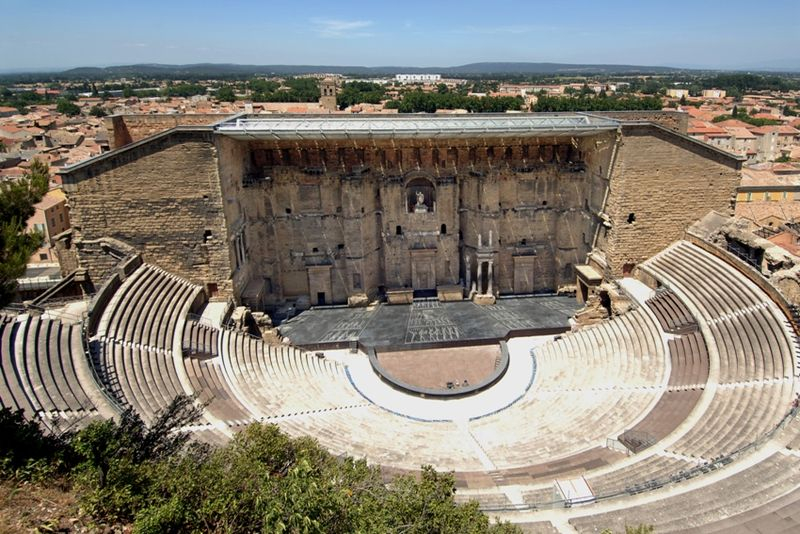
Photo: wikipedia 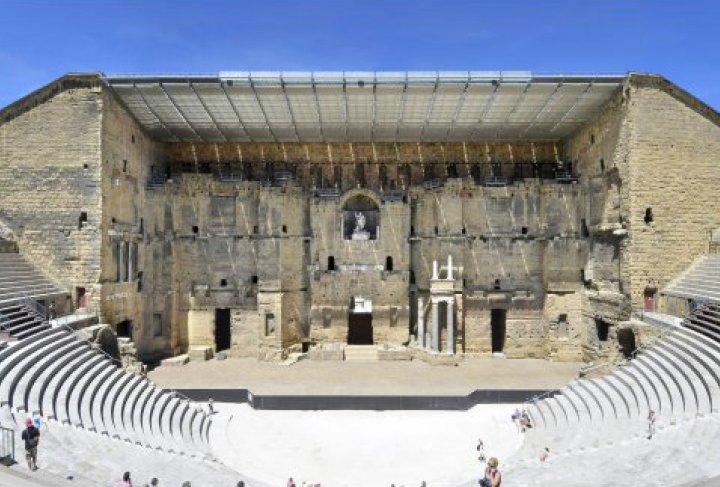
Photo: tourisme-ceze-cevennes.com












